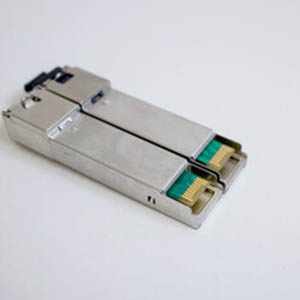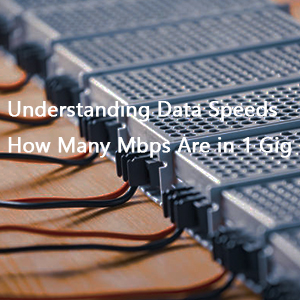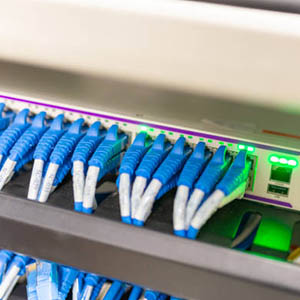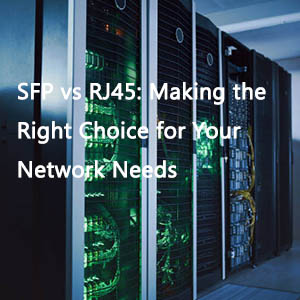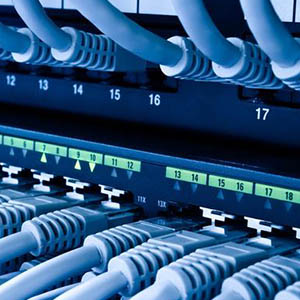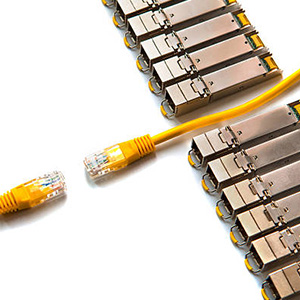Fiber optic transceivers modules can be divided into different categories based on their performance characteristics and end use. Common characteristics used in fiber optic transceivers classification include: fiber mode, transmission rate, transmission distance, wavelength, and connector type. These categories are discussed in more detail below.
Fiber optic transceivers modules with similar characteristics are further grouped and classified into packages, also known as form factors. Currently, there are 6 main form factors of commonly used fiber optic transceivers: SFP+, SFP, GBIC, X2, XFP, XENPAK, and the increasingly popular QSFP+ (for 40Gbps) and CFP (for 100Gbps) transceivers.
Fiber Mode
Perhaps the most basic classification of a fiber optic transceivers is the “mode type” of fiber it is designed for. The two basic classifications of fiber mode types are: multimode and single mode. Multimode fiber, with a core diameter typically ranging from 50 to 62.5 microns, is much larger than the core diameter of single mode fiber, which ranges from 8 to 9 microns.
Multimode fiber, due to its larger core aperture, allows multiple light beams to be coupled into the fiber. These different modes of light propagate at slightly different speeds as they travel along the fiber. The result is a “pulse spread” called modal dispersion. This multimode-specific dispersion severely limits the transmission distance of multimode fiber relative to single-mode fiber. Since multimode applications are always short-distance, very cheap transmitters and receivers are typically used in multimode transceivers. Therefore, although multimode fiber itself is not much different in price from single-mode fiber, the price of a multimode transceiver is usually a fraction of that of a single-mode transceiver.
Single-mode fiber, as the name implies, only allows one mode of light to be coupled into the core. This completely eliminates the modal dispersion problem. Single-mode fiber transmission is limited by several other dispersions, specifically chromatic dispersion and polarization mode dispersion. However, these dispersions are much “weaker”, allowing single-mode fiber to support much longer transmission distances than multimode fiber.

Transmission Rate(Fiber optic transceivers)
Fiber optic transceivers modules are often classified according to their data transmission rate. There are five popular rate categories used in fiber optic transceivers classification: 100GBase, 40GBase, 10GBase, 1000Base, and 100Base. These rates refer to the speed at which the fiber optic transceivers is able to transmit data on Ethernet.
Transmission Distance
Not all fiber optic transceivers modules can transmit data at the same distance. As mentioned above, one major distinction is multimode vs. single-mode transceivers. For multimode applications, both the transmission rate and the specific type of fiber affect the transmission distance. For single-mode applications, the transmission rate is the main factor affecting the transmission distance.
Wavelength
Infrared light is used when transmitting data in a fiber optic network. Wavelength is a measurement of the distance between consecutive peaks in a light wave. Fiber optic transceivers modules typically transmit data at one or one of three main wavelengths: 850nm, 1310nm, or 1550nm.
Connector Type
Fiber optic connectors couple and align the transceivers so that light can pass through the core. Transceiver modules can be classified into different groups based on their connector type. There are four main types of fiber optic module connectors used with optical transceivers today: SC, LC, MPO, and ST.
Connector types generally follow a color-coding system. If the connector is compatible with single-mode fiber, it will be yellow. Connector types compatible with multimode fiber will be orange, black, or gray. If adaptive ferrules are used on the connector, then a blue ferrule indicates compatibility with single-mode fiber and a beige ferrule indicates compatibility with multimode fiber.
There are various fiber optic cables available in the market for connecting devices with different connectors.

